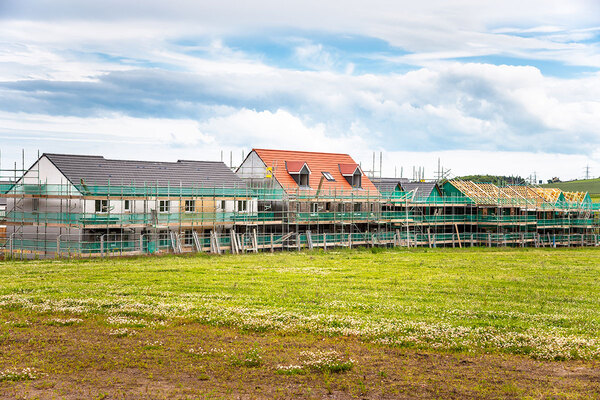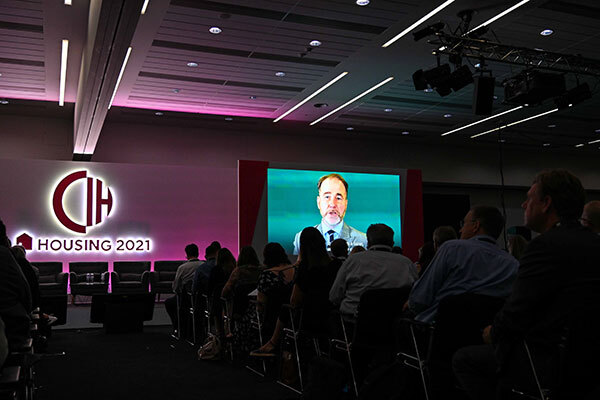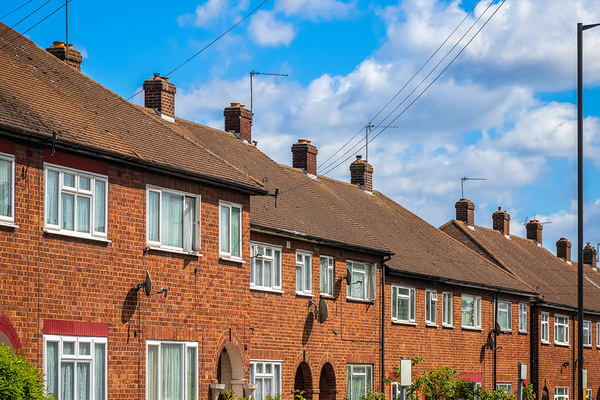The Week in Housing: what the strategic partnerships tell us about the future of development
A weekly round-up of the most important headlines for housing professionals
Afternoon everyone.
It has been a big week for social housing development this week. After much anticipation, Homes England and the Greater London Authority (GLA) released their lists of strategic partners, which would make up a significant part of its £11.8bn Affordable Homes Programme over the next five years.
The sector was forced to wait a little bit longer by the government. After announcing the strategic partnerships were coming, we then had to wait another few hours for the GLA list and another 24 hours for the Homes England list.
And the lists are very interesting for many reasons.
First, let us look at the Homes England list for development outside of London. This time round, Homes England got a much larger slice of the Affordable Homes Programme pie, with 65% (£7.5bn) of the government’s £11.5bn fund. A total of £5.2bn of this has now been allocated between its partners.
There were also a number of new players. Significantly, Clarion, the country’s largest housing association, became a strategic partner this time, securing £250m to start 4,770 homes over the next five years.
Abri, which was recently formed after a merger between Radian Group and Yarlington Housing Group, was also new to the list, securing £250m for 3,218 homes. Other new entrants included Sanctuary, Riverside, Aster, Karbon Homes and LiveWest.
For the first time, it was not just housing associations that were able to bid for government grant. Homes England had trailed before bidding opened that for-profit providers would be able to access cash. On Monday, it named Legal & General, Sage Housing, Vistry Group and McCarthy Stone as the successful for-profit bidders.
Discussions on merits of private companies receiving such high levels of grant will rumble on, what is clear is that these organisations will play a significant part in developing outside of London. In the coming years, those four providers will receive a combined total of £375.9m in exchange for starting 6,485 homes by 2026.
Who was not on the list was just as interesting as who was.
For example, L&Q, which for years has been the sector’s biggest developer and last time was allocated £85m for 1,724 homes, was absent this time round. The association told Inside Housing earlier this year that escalating fire safety meant it has had to reduce its development pipeline by 70%.
Others missing from this year’s list include Optivo, Southern Housing Group, WHG and Yorkshire Housing. While it is only a handful, having big players like these not part of the programme will be a blow to Homes England, I’m sure.
Equally, there were no councils to speak of on the list. In the lead up to bidding opening for the new wave of funding, Homes England made a big play that for the first time for-profit providers and local authorities would be able to bid.
But while the for-profits were included in force, no councils were named. Whether this was the result of a lack of appetite from councils to bid can’t be known yet for sure, but I’m sure there would be many local authorities keen to develop and get their hands on much-needed grant.
It is here where the allocations differ widely between Homes England and the GLA. Where there were no local authorities on Homes England’s list, there were 23 councils included on the GLA’s. That’s 70% of all London Boroughs.
These were not small amounts of money, either. In the case of Barking and Dagenham, which was not included in the last round of funding, secured £171m to start 1,184 homes, including 573 for social rent. Enfield got £166m for 1,119 homes, 824 of which would be for social rent; Ealing got £109.5m for 1,032 homes, 561 of which would be for social rent; and Southwark got £126m for 852 homes, 664 of which would be for social rent.
On the other hand, some of the large London associations saw their allocations drop when compared with the last round. For example, Peabody received £120m to build just 1,000 homes, compared with £221m the latest wave of funding. L&Q secured £55.1m for 539 homes, down from £394.7m for 11,610 homes it secured last time.
This is a result of the GLA clearly focusing on the development of social rent housing, rather than shared ownership. Half of all GLA homes will need to be for social rent, around half of all Homes England properties need to be for shared ownership. Those for rent will be required to have the option of shared ownership when someone moves in.
Generally, for-profit providers are more interested in the shared ownership tenure, or at least affordable rent, while councils want to build social rent to reduce their waiting lists.
The GLA list only included one for-profit, ReSI, which secured £56.3m to start 1,250 homes.
An in-depth analysis of Homes England’s strategic partnerships and how they compare with the last wave of funding can be found here, and our comparative piece on the GLA allocations can be found here.
While it dominated the headlines, the strategic partnerships was not the only story this week. Our deputy news editor Nathaniel Barker pulled together a fascinating feature following up on the recent scrutiny of housing associations repairs operations and asked questions of why there were widespread problems and how they could be fixed.
Inside Housing had the latest on how a cyber attack of repairs provider Plentific saw some London housing association residents sent phishing emails after contact details were accessed by scammers.
Finally, happy Housing 2021 eve, everyone. Looking forward to seeing you all in Manchester next week. Don’t be afraid to say hi to the Inside Housing team across the three days.
Jack Simpson, news editor – @JSimpsonjourno
Editor’s picks: five must-read stories
1. How to fix social housing’s repair problem
2. Strategic partnerships 2021 to 2026: how Homes England allocations compare to last time around
3. Complaints to Housing Ombudsman rise by 21%
4. Housing association residents hit by phishing emails after Plentific cyber attack
5. New supported housing REIT aiming to raise £250m on stock market to operate ‘fairer lease model’
Sign up for our Week in Housing newsletter
Already have an account? Click here to manage your newsletters













